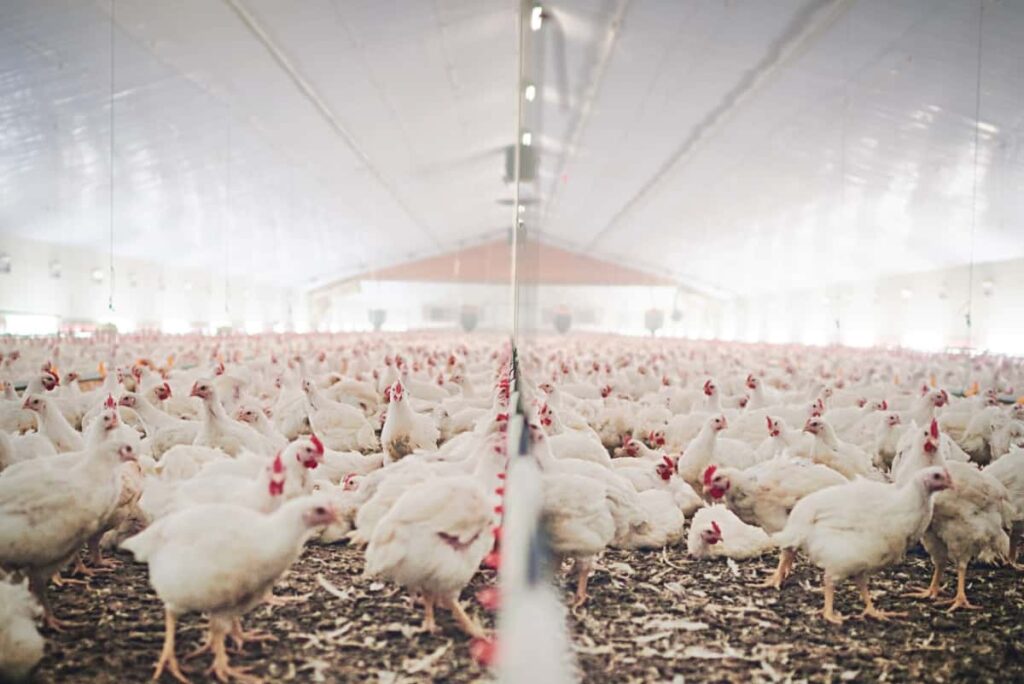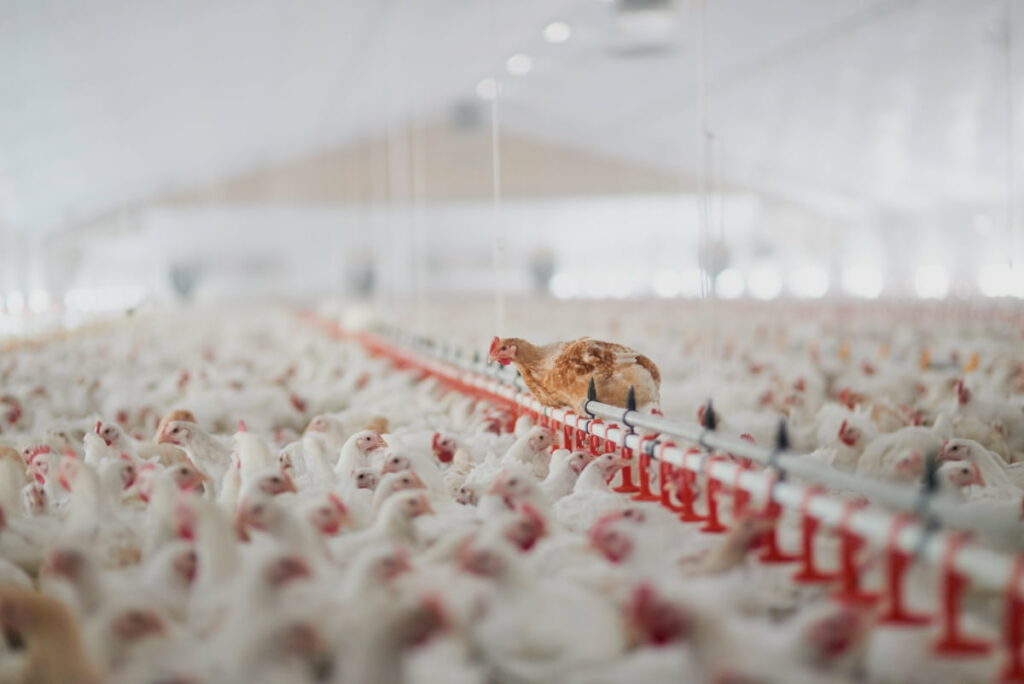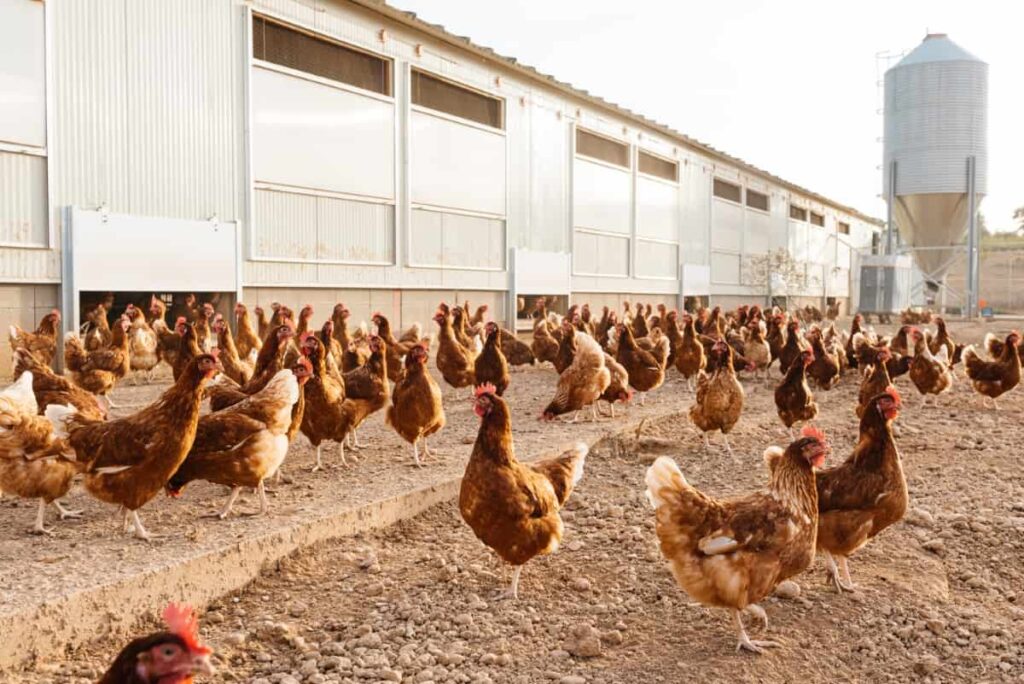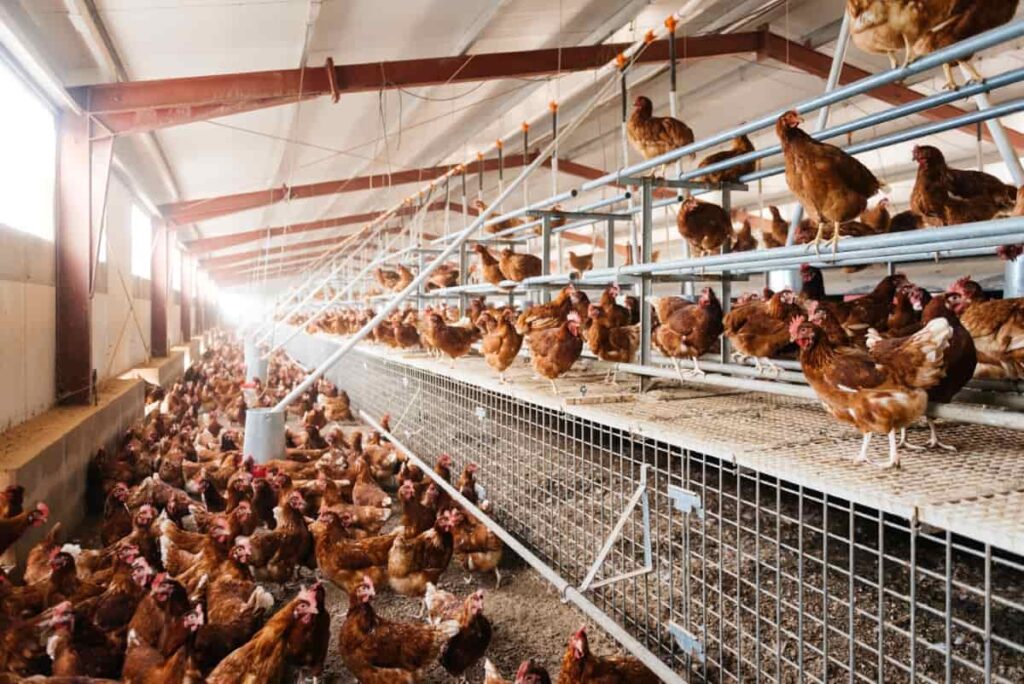Poultry farming in Malaysia offers a multitude of benefits for both farmers and consumers alike. The main advantage is the steady supply of fresh and nutritious poultry products that it provides to meet the growing demand in the country. With its highly efficient production systems, poultry farming ensures that Malaysians have access to quality protein sources at affordable prices.

Poultry Farming in Malaysia
Overview of the Malaysian Poultry Industry
Poultry farming in Malaysia refers to the method of raising domesticated birds like chickens, ducks, and turkeys for their meat or eggs. It is an integral part of the country’s agricultural sector and meets the nation’s food demands. In Malaysia, poultry farming involves various activities, including breeding, hatching, and processing of poultry products.
Furthermore, Malaysia’s favorable climate conditions provide an ideal environment for poultry rearing. The tropical climate allows birds to thrive year-round, reducing the risk of seasonal fluctuations in production. In addition, abundant land resources make it feasible to establish large-scale poultry farms across the country.
The Malaysian poultry industry has experienced significant growth and development in recent years. Malaysia has a well-established poultry farming sector, consisting of both small-scale backyard farms and large commercial operations. The country’s diverse climate and fertile land make it suitable for various types of poultry production systems.
Best Chicken Breeds in Malaysia
Malaysia is known for its diverse poultry industry, and several chicken breeds thrive in the country’s climate and environment. Ayam Kampong, also known as village chickens, are highly popular due to their adaptability and resilience. These chickens have a distinctive appearance with colorful feathers and strong immune systems.
Serama chickens, on the other hand, are famous for their small size but big personalities. Originating from Malaysia itself, these bantam-sized birds make excellent pets due to their friendly nature. Despite their small stature, Seramas lay eggs regularly and have vibrant plumage that adds charm to any backyard flock. Another notable poultry breed in Malaysia is the Malay Game.
Known for its aggressive behavior during cockfighting events (which is illegal in most countries), this breed has become increasingly rare outside of dedicated breeding programs. However unethical it may be to involve them in such activities nowadays, this breed continues to exist because they’re a historically important part of Malaysian culture. Rhode Island Red is a popular dual-purpose breed that has gained global recognition for its excellent laying capabilities as well as good-quality meat attributes.
Steps for Starting Poultry Farming in Malaysia
- Research and Planning: Begin by conducting thorough research on the poultry industry in Malaysia. Understand market demand, regulations, and potential challenges. Develop a poultry business plan that includes your goals, marketing strategies, and financial projections.
- Secure Funding: Find the capital required for setting up your poultry farm. Explore different financing options like bank loans or government grants for agricultural projects.
- Choose the Right Location: Select a suitable location with ample space for housing chicken coops, feed storage facilities, and other necessary infrastructure. Ensure easy access to transportation networks for distribution purposes.
- Obtain Necessary Permits: Familiarize yourself with all legal requirements and obtain necessary permits from relevant authorities before commencing operations.
- Build Infrastructure: Construct chicken coops that provide adequate space per bird according to industry standards. Install proper ventilation systems, feeding equipment, lighting fixtures, water supply systems, and waste management facilities.
- Purchase Quality Breeds & Equipment: Source high-quality chicken breeds from reputable suppliers. Choose appropriate equipment like feeders, water systems, nest boxes, etc.
- Establish Feed Supply Network: Establish partnerships or contracts with reliable feed suppliers who can provide nutritious feeds consistently at competitive prices.
- Implement Biosecurity Measures: Implement strict biosecurity measures to prevent disease outbreaks on your farm. Practice regular cleaning, sanitization, and quarantine protocols.
In case you missed it: Backyard Poultry Farming in the Philippines: Best Chicken Breeds to Raise in Backyards of the Philippines

Cost and Profit Analysis of Poultry Farming in Malaysia
The initial investment for starting a poultry farm in Malaysia can change based on several factors, including the size of the operation, type of housing, breed selection, and equipment required. Poultry farming in Malaysia has proven to be a profitable venture for many farmers. With the growing demand for poultry products, there is a steady market that ensures good returns on investment. The profit margins of poultry farms in Malaysia vary depending on several factors, such as the scale of operations, management practices, and market conditions.
| Item | Average Cost |
| The average production cost of chicken | RM6.53 per kilogram |
| The average production cost of an egg | RM0.48 each |
| Cost of poultry feed (Starter type) | RM132.04 per 50 kg |
| Cost of poultry feed (Grower type) | RM129.71 per 50 kg (Broiler) |
| RM117.08 per 50 kg (Layer) | |
| Cost of poultry feed (Finisher type) | RM126.96 per 50 kg (Broiler) |
| RM115.10 per 50 kg (Layer) | |
| Cost of day-old chicken (Broiler) | RM2.12 each |
| Cost of day-old chicken (Layer) | RM3.32 each |
| Profit margin per kilogram of chicken | RM1.30 (Wholesale), RM1.25 (Retail) |
| Profit margin per egg | RM0.04 (Wholesale), RM0.02 (Retail) |
Sustainability Practices in Malaysian Poultry Farming
In Malaysia, there has been a growing awareness of the importance of sustainable ways in the poultry sector. To ensure sustainable practices within the industry, Malaysian poultry farms adhere to strict guidelines set by regulatory bodies such as the Department of Veterinary Services (DVS). These regulations cover aspects like animal welfare standards, biosecurity measures, and proper waste management procedures.
Water conservation is another aspect of sustainable poultry farming in Malaysia. Water scarcity is becoming increasingly prevalent in certain regions, so farmers are investing in technologies like drip irrigation and rainwater harvesting systems to reduce water usage. Malaysian poultry farmers are increasingly adopting practices that prioritize the health of their birds.
Government Policies in Shaping the Poultry Industry in Malaysia
The government plays a major role in shaping the growth and development of the Malaysian poultry industry through policies that support farmers’ access to capital, technology transfer programs, and market expansion initiatives. The significant policy implemented by the government is to encourage local farmers to adopt modern technologies and best practices for poultry farming in Malaysia. They provide subsidies, grants, and training programs to help farmers upgrade their facilities and improve production efficiency.
In case you missed it: Cassava as Livestock and Poultry Feed: Exploring Benefits with Different Animals

In addition, the government has imposed strict guidelines on food safety standards for poultry products. To promote exports, the Malaysian government actively engages in trade negotiations with other countries. The DVS (Department of Veterinary Services) plays a crucial role in overseeing the implementation of these regulations. They conduct regular inspections on poultry farms to ensure compliance and provide technical guidance when needed.
Challenges Faced by Poultry Farmers in Malaysia
The major challenge faced by poultry farmers in Malaysia is the outbreak of diseases among their flocks. Diseases like avian influenza and Newcastle disease can wreak havoc on poultry farms, leading to significant financial losses. Another challenge is the rising cost of feed and other inputs. Poultry feed accounts for a main portion of the production costs, and fluctuations in prices can impact profit margins.
Farmers also need to ensure that they have access to quality feed that meets the nutritional requirements of their birds. Maintaining biosecurity is another crucial challenge for poultry farmers. Preventing the entry and spread of diseases requires strict adherence to biosecurity measures such as proper sanitation practices, controlling visitor access, and implementing quarantine procedures for new birds.
Additionally, competition from imported poultry products poses a challenge for local farmers. Imported chicken often enters the Malaysian market at lower prices due to factors such as economies of scale or lower production costs in exporting countries. Market volatility is a challenge faced by poultry farmers. Fluctuating demand patterns or sudden shifts in consumer preferences can affect sales and profitability.
In case you missed it: Sustainable Poultry Farming: Benefits and How to Reduce Your Carbon Footprint with Chickens

Conclusion
Poultry farming serves as a significant source of income for many individuals and communities across Malaysia. The demand for poultry products in Malaysia has been steadily increasing over the years. With a growing population preference, there is a constant need for chicken meat and eggs.
- Crops Grown in Summer Season: Best Choices for Summer Gardening
- Organic Pest Control for Tomato Farming
- How to Maximize Sheep Farming Profit
- Broccoli Varieties: Choosing the Right Cultivars for Your Farm
- How to Raise Pigs in Your Own Backyard: A Comprehensive Guide
- Budget Friendly Sheep Shed Ideas: Cheap and Low-Cost Tips
- How Much Do Cattle Farmers Make: Revenue Streams in Cattle Farming
- Management Pests and Diseases in Your Cotton Field
- Sheep Farming Business Plan for Beginners
